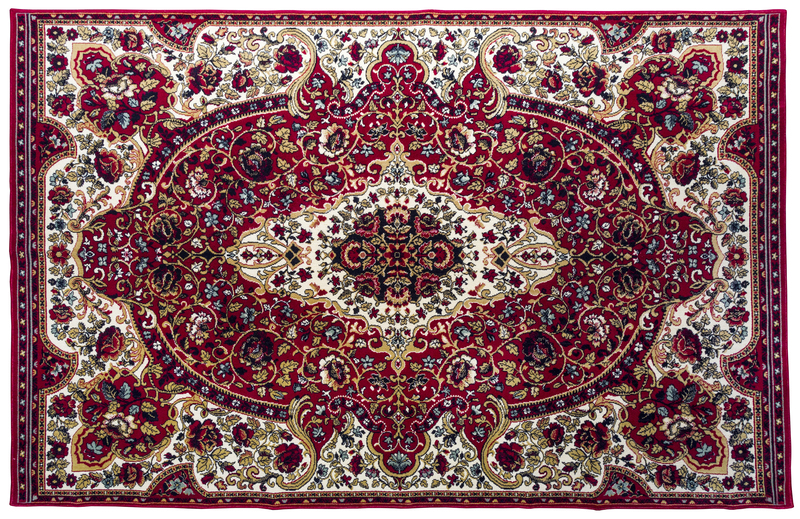Achieve Professional Curtain Clean at Home
Posted on 27/05/2025
Achieve Professional Curtain Clean at Home: The Ultimate Guide
Dirty curtains can ruin the aesthetic of your living space, harbor allergens, and even affect your wellbeing. Fortunately, you don't always need to call in professionals to enjoy spotless, fresh-smelling drapes. With a little know-how and effort, you can achieve a professional curtain clean at home, saving both time and money!
Why is it Important to Clean Curtains Regularly?
- Allergen Control: Curtains often collect dust, pet dander, and pollen, contributing to allergies and respiratory issues.
- Enhanced Appearance: Clean drapes instantly brighten any room and add to your decor's appeal.
- Prolonging Fabric Life: Regular cleaning extends the lifespan of your curtains by preventing fiber breakdown.
- Odor Elimination: Fabrics can absorb cooking smells, tobacco smoke, and other pollutants over time.
Achieving that professional curtain clean look at home is easier than you may think!

Understanding Your Curtains: Fabric Types and Cleaning Needs
Before you start any cleaning process, identify your curtain's fabric. Each fabric has unique requirements, and understanding these helps prevent costly damage.
Common Curtain Fabrics and Cleaning Methods
- Cotton or Linen: These natural fibers can often be machine washed, but always check the label first.
- Silk or Velvet: These luxurious materials require gentle, delicate care--either hand wash or dry clean.
- Polyester and Synthetics: These are generally durable and machine-washable, making at-home cleaning simple.
- Sheer or Lace: Thin, delicate curtains often need a very gentle hand wash or a protective wash bag in the machine.
Always check for care labels before diving into the cleaning process.
Step-by-Step Guide to Achieve a Professional Curtain Clean at Home
1. Dusting & Initial Preparation
- Remove all hooks, rings, and accessories. This prevents rust stains and fabric tears during cleaning.
- Shake curtains outdoors, if possible, to get rid of loose dust and debris.
- Vacuum with an upholstery attachment to remove embedded dust and allergens. Move from top to bottom for even cleaning.
Tip: Don't forget to vacuum curtain folds and edges where dust often collects!
2. Spot Cleaning Stains
- Check for stains before washing.
- Mix a mild detergent with water, dab a soft cloth in it, and gently blot the stain--avoid rubbing, as it can damage fibers.
- Test on a hidden area first to ensure colorfastness.
- For stubborn spots, try a vinegar-water solution (equal parts) or use a specialty fabric cleaner that's safe for your material.
3. Washing Your Curtains: Machine, Hand, or Steam?
Now comes the crucial stage: deep cleaning your curtains for a truly professional result.
- Machine Washing Curtains
- Choose a gentle cycle with cold water to prevent shrinking and fading.
- Use a mild liquid detergent--powder can leave residue.
- Wash them alone or with similar lightweight items to avoid tangling.
- For sheer or lace drapes, place them inside a mesh laundry bag for protection.
- Hand Washing Curtains
- Fill a large sink, bathtub, or basin with lukewarm water and mild detergent.
- Soak the curtains and gently agitate them--never scrub, as this can stretch delicate fabrics.
- Rinse thoroughly and press out excess water (never wring or twist).
- Steam Cleaning
- A clothes or upholstery steamer can eliminate odors and sanitize drapes without taking them down.
- Ensure your curtains are safe for steaming (refer to label instructions).
- Move the steamer slowly from top to bottom--avoid lingering in one spot.
Remember: Silk, velvet, or interlined curtains are best left to professional dry cleaning to avoid damage!
4. Drying Curtains Properly
Professional curtain clean results depend on correct drying techniques. Incorrect drying can lead to shrinking, wrinkles, or mildewing.
- Air dry curtains whenever possible. Hang them back on their rod while slightly damp--gravity helps pull out wrinkles for a smooth finish.
- Avoid direct sunlight, which can cause fading.
- Use a tumble dryer only if specified on the care label (typically at a low-heat setting).
- If needed, iron curtains on a low setting while they're still damp for that crisp, professional look. Use a pressing cloth to avoid scorching.
5. Rehanging and Finishing Touches
- Insert hooks, rings, and accessories only after curtains are fully dry.
- Give them a final shake or gentle steam once rehung to ensure they hang neatly.
- For extra freshness, spritz lightly with fabric refresher spray.
Professional Curtain Cleaning at Home: Extra Tips
How to Keep Curtains Clean for Longer
- Vacuum curtains weekly to remove dust and allergens.
- Open windows regularly to reduce moisture buildup and prevent mold or mildew.
- Use a lint roller to pick up pet hair or fluff in between washes.
- Rotate curtains seasonally if possible, to ensure even wear and fading.
- Consider using curtain liners to protect delicate drapes from dirt, sunlight, and moisture.
Treating Specific Curtain Cleaning Challenges
- Mold and Mildew: Mix 1 part white vinegar to 4 parts water, dab the affected area, and dry thoroughly in a well-ventilated spot.
- Smoke or Food Odors: Sprinkle baking soda on drapes, let sit for 1 hour, then shake or vacuum away.
- Pet Hair: Use a slightly damp microfiber cloth or a rubber glove to gently brush hair away.
- Wrinkles and Creases: Lightly mist with water and steam gently for a smooth, tailored finish.
How Often Should You Clean Curtains?
- Lightweight, unlined curtains: Every 3 to 6 months.
- Heavy, lined drapes or curtains in high-traffic areas: Every 4 to 6 months.
- Sheer or lace drapes: At least twice a year.
- Vacuuming and spot cleaning: As often as necessary, ideally weekly.
Note: If anyone in your home suffers from allergies or asthma, more frequent curtain cleaning is recommended for optimal air quality.
Choosing the Right Cleaning Products for a Safe, Professional Curtain Clean
Not every household detergent is suitable for drapes. Using the right products ensures a thorough clean without damaging fibers or causing discoloration.
- Always opt for mild, color-safe detergents, especially for delicate and colored fabrics.
- Avoid bleach or harsh chemicals unless specific for white, bleach-safe curtains.
- Choose fragrance-free products for allergy-prone household members.
- Test any new product on a hidden section first to check for fading or fabric weakness.
Eco-Friendly Cleaning Methods
- White vinegar can be mixed with water for a natural deodorizer and mild disinfectant.
- Baking soda absorbs odors and helps remove stains when used as a pretreatment.
- Lemon juice added to wash water helps brighten white curtains naturally.
When to Call the Professionals
While it is entirely possible to achieve professional curtain clean results at home, there are situations where an expert's touch is advised:
- Stains that won't budge, despite repeated at-home treatments.
- Antique, interlined, or specialty curtains that may be easily damaged.
- Extensive mold, mildew, or lingering odors that regular cleaning can't solve.
- Heavily embroidered or beaded fabrics, or curtains with glued embellishments.
Professional curtain cleaners use specialized solvents, gentle washing techniques, and dedicated drying rooms to protect your investment.

FAQs: Your At-Home Curtain Cleaning Questions Answered
Can I clean blackout or thermal curtains at home?
Yes, but with extra care! Always refer to the manufacturer's label. Most can be spot cleaned with a mild detergent, but avoid submerging the thick lining in water unless the label confirms it's safe. Air dry flat and avoid wringing.
Is it necessary to remove curtains to clean them?
No, not always. Regular vacuuming and steam cleaning can be done while the curtains are hanging. However, for a deep, professional curtain wash at home, removing them provides the best access for thorough cleaning.
How do I prevent shrinkage when washing curtains?
Always wash using cold water and a gentle cycle. Air dry rather than tumble-dry if unsure, and skip hot ironing. If the label only allows dry cleaning, do not wash at home.
Can I use a carpet cleaner or upholstery shampooer on curtains?
Sometimes, for heavier, tightly-woven drapery. However, check fabric compatibility and always spot test first.
Conclusion: Enjoy Fresh, Beautiful Curtains--All Year Round!
With this comprehensive, step-by-step guide, you can now achieve a professional curtain clean at home with confidence! Not only will your drapes look and smell fresh, but regular cleaning also safeguards your family's health and prolongs the life of your window treatments.
Remember:
- Identify fabric type and read care instructions before starting.
- Pre-treat stains and use gentle, fabric-friendly products.
- Dry and rehang curtains properly for a crease-free, professional finish.
- Maintain curtains weekly to reduce allergens and dust buildup.
Upkeep your home's elegance--and your family's health--by making professional-grade curtain cleaning a regular part of your household routine!



